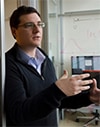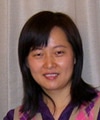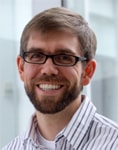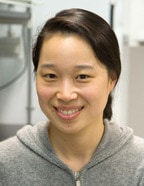Agilent Early Career Professor Award
Previous Agilent Early Career Professor Award Winners
2016 Agilent Early Career Professor Award Winner
2016 Focus: Contribution to the development of advanced Big Data technologies aimed at making breakthroughs in life science research and imaging for clinical diagnostics.

Roeland G.W. Verhaak, Ph.D.
Professor and Associate Director of Computational Biology
The Jackson Laboratory for Genomic Medicine
Farmington, CT
Verhaak 博士于 2000 年获得荷兰内梅亨大学的生物医学科学硕士学位,2006 年获得荷兰鹿特丹伊拉斯姆斯大学医学中心医学博士学位。随后,他在美国马萨诸塞州剑桥的麻省理工学院和哈佛大学达纳法博癌症中心/布罗德研究所医学肿瘤内科从事博士后工作。
Dr. Verhaak’s work on cancer genomics and computational biology and its impact on the molecular characterization of cancer are well known. During his graduate work he demonstrated that gene expression subtyping correlate with genomic alterations of Acute Myeloid Leukemia and provides prognostic value. As part of his postdoctoral research he further demonstrated that clinically distinct subtypes of Glioblastoma can be differentiated based on transcriptional profiling of the tumors.
Dr. Verhaak joined MDACC in 2010 and has built an outstanding research program to analyze terabyte-sized data sets from DNA, RNA, epigenome and other sequencing approaches with the goal of investigating therapy resistance in glioma. In 2015 he published the genomic characteristics of longitudinally sampled glioblastoma tumors and is currently expanding this effort through development of the GLASS consortium. Dr. Verhaak’s has also been a key player at TCGA and his computational pipelines for massively parallel processing of sequencing and microarray expression data are still being used. Dr. Verhaak joined JAX in October 2016.
His outstanding work has been recognized by a number of awards related to the genomics of glioblastoma, including the Wilson S. Stone Memorial Award in 2011, the Pediatric Brain Tumor Foundation Peter Steck Award in 2013, the Adult Basic Research Award from The Society for Neuro-Oncology in 2014 and the AAAS Martin and Rose Wachtel Cancer Research Award in 2016. (Press release)
2015 年度“安捷伦早期职业生涯教授奖”获奖者
2015 年焦点人物:在用于基因组编码、控制和其他应用中的 CRISPR/Cas 及其他 RNA 技术的深入理解和使用方面做出杰出贡献。

Mitchell Guttman 博士
美国加州理工学院
生物和生物工程部副教授
美国加利福尼亚州帕萨迪纳
Guttman 博士在 2012 年被麻省理工学院生物系授予了博士学位。之后他作为博德研究所的独立研究员设立了自己的实验室,随后在 2013 年 6 月加入了加利福尼亚理工学院。Guttman 博士在 2006 年获得了美国宾夕法尼亚大学的分子生物学和计算生物学双学士学位,以及计算生物学和生物信息学硕士学位。
Guttman 博士在麻省理工学院的毕业设计以及之后在博德研究所的研究工作中发现并表征了长链基因间非编码 RNA — lincRNA。lincRNA 在细胞中的作用有很多,包括从胚胎肝细胞的可塑性调节到 X 染色体失活的诱导和维持。Guttman 博士通过开发新型生物信息学方法分析 RNA 测序数据发现了 lincRNA,他还通过染色质标签、蛋白质结合相互作用和 DNA 环绕伴侣蛋白过程中的化学变化揭示了 lincRNA 的作用机制。他的工作还阐明了 lincRNA 的潜在作用,即在特定的基因组位点,lincRNA 是蛋白复合物的关键组织者。
为更好地理解 lincRNA 如何控制基因表达程序和细胞状态决定,Guttman 博士近期的工作重点放在探索 lincRNA 通过与特定的蛋白质或蛋白质复合物结合而定位至目标位点的调控机制以及研究核酸序列上。利用 lincRNA 的特性,Guttman 博士还计划建立哺乳动物细胞工程的模块化/程序化方法。
Guttman 博士的研究工作获得了诸多奖项和赞誉,其中包括 2012 年美国国立卫生研究院主任早期独立奖,还被福布斯杂志提名为 2014 年“影响世界的 30 位 30 岁以下的科学家”。(新闻稿)
2014 Agilent Early Career Professor Award Winner
2014 年焦点人物:在研究细胞群中分子性质与动力学的高级单细胞测量技术开发方面做出巨大贡献。

Paul Blainey, PhD
助理教授
麻省理工学院和哈佛博德研究所
生物工程系
麻省理工学院
美国马萨诸塞州剑桥
Blainey 博士于 2012 年加入麻省理工学院生物工程系以及麻省理工学院和哈佛博德研究所。他的研究计划旨在将新型微流控、光学和分子工具整合用于生命科学应用。Blainey 的实验室重点研究单细胞和单分子定量方法,旨在实现多参数研究,揭示众多自然与生物工程系统的活动。
在哈佛大学博士论文工作中,Blainey 博士展示了蛋白质分子移动与 DNA 保持持续联系,并通过动力学方式修复蛋白质(而非热力学方式)解决了病变识别问题。他进一步证明 DNA 结合蛋白质移动时对 DNA 螺旋的追踪,并发现了具有移动活性的新品种生物分子。作为一位博士后,Blainey 博士利用数字 PCR、单细胞分选以及微流控全基因组扩增技术提升了新一代测序技术的灵敏度。
在麻省理工学院和博德研究所,Blainey 博士重点研究微流控与单细胞基因组学领域的技术与应用开发。他的团队与博德研究所的科学家们合作开发出具有简化技术的全新平台,能够大大提高关键工作流程的通量。Blainey 博士同时致力于创建包括使用单细胞测序的全新方式在内的新型工作流程。
Dr. Blainey received a Bachelor of Science degree in Chemistry and a Bachelor of Arts degree in Mathematics in 2001 from the University of Washington, both cum laude. He received his Ph.D. in Physical Chemistry in 2007 from Harvard University. From 2007 to 2012 he worked at Stanford University as a post-doc in Stephen Quake's laboratory. (press release)
2013 Agilent Early Career Professor Award Winner
2013 年焦点人物:在癌症诊断领域做出巨大贡献,研究目标为病理学中蛋白质组和/或基因组生物标记物的多分析物工具。

Jindan Yu, M.B., Ph.D.
Assistant Professor
Department of Medicine
Division of Hematology/Oncology
Northwestern University
Chicago, IL
Yu 博士于 2009 年加入美国西北大学血液/肿瘤学部门医学系,成为了一名助理教授。她在西北大学的研究项目旨在利用基因组学与生物信息学方法阐明前列腺肿瘤形成的潜在机制,并确定用于前列腺癌症诊断与预后的治疗靶标与生物标记物。
前列腺癌症对较大一部分男性人群造成影响,但肿瘤的生长速率存在很大差异。目前仍没有可靠的检测方法能够辨别不同类型的前列腺癌症。Yu 博士研究不同前列腺肿瘤类型的遗传学与表观遗传学信息,旨在开发出预测肿瘤生长速率的最佳检测方法。
Yu 博士采用全基因组技术测量肿瘤生物学,并采用深度测序揭示在前列腺癌症病程进展的不同阶段中 DNA 甲基化的不同模式。她正在研究鉴定到的不同甲基化区域是否能够预测疾病的未来发展趋势。
Dr. Yu received a Bachelor of Medicine degree in 1998 from Peking University. She received her M.S. in Statistics in 2003 and her Ph.D. in Biomedical Engineering in 2004 from the University of Michigan. From 2004 to 2007 she worked at the HHMI and Michigan Center for Translational Pathology under Dr. Arul M. Chinnaiyan, M.D., Ph.D. (press release)
2012 Agilent Early Career Professor Award Winner
2012 年焦点人物:在结构生物学分支领域做出巨大贡献,研究目标为利用核磁共振 (NMR) 技术加深对核酸或蛋白质分子结构与功能的认识。

Anthony Mittermaier
Associate Professor
Department of Chemistry
McGill University
Montreal, Quebec, Canada
Dr. Mittermaier joined the faculty of the Department of Chemistry at McGill University in 2005 as an Assistant Professor and was promoted to Associate Professor in 2011. The aim of his research program at McGill University is to gain a better understanding of the relationship between the structure of biomolecules, their energetics, dynamic behavior and function by designing new experimental strategies to probe protein conformational transitions based on Nuclear Magnetic Resonance (NMR).
生物系统依赖于受到严格调控的蛋白质/配体相互作用网络。Mittermaier 博士通过将 NMR 和等温滴定量热法 (ITC) 的数据相结合,实现了对极短暂的蛋白质/配体相互作用的表征。他的实验室采用差示扫描热量计与 NMR 研究微秒级的蛋白质折叠能否协作发生。
变构性是生物系统的一个重要特征,在这一系统中,大分子或大分子组合体中同一位点的共价修饰或配体结合将影响远处位点的活性。Mittermaier 博士及其团队将 NMR、ITC 与圆二色光谱相结合,揭示了多种生物分子的全新变构机制。
Mittermaier received a B.Sc. in Biophysics in 1996 at the University of Guelph. He received his Ph.D. in 2003 in Biochemistry at the University of Toronto under Prof. Lewis E. Kay. (press release)
2011 Agilent Early Career Professor Award Winner
2011 年焦点人物:与包括单组学在内的整合生物学领域接轨。这一领域的研究通常涉及两种或两种以上组学(基因组学、蛋白质组学及代谢组学等),通过关联生物系统的不同视角获得深入认识,帮助更好地了解生命。

Dr. Michael Jewett
Northwestern University
Assistant Professor of Chemical and Biological
Northwestern University, Chicago
Jewett 博士于 2009 年加入美国西北大学工程学院,在此他设计出了适用于医学与生物技术领域重要应用的生物系统。他在攻读博士学位时,在斯坦福大学研究胞外生物学,并在丹麦技术大学研究系统生物学,在这两个领域都取得了优异的成果。在进入西北大学前,他在哈佛大学进行博士后研究并在合成生物学领域做出了巨大贡献。
Jewett 在斯坦福大学的 James Swartz 实验室中开发了一种高产量和低成本的细菌胞外蛋白质合成平台,这一平台现已作为高通量蛋白质生产平台并用于个性化药物的商业生产。尽管胞外翻译系统的应用历史已超过 50 年,但 Jewett 证明了在有利于高水平蛋白质合成的条件下,中心代谢、氧化磷酸化、转录与翻译能够在一根试管中被同时激活。
Jewett 在丹麦技术大学的 Jens Nielsen 实验室中创建了酵母的首个数据集,其中整合了至少三个细胞层次的数据和具有代谢网络拓扑结构的蛋白质相互作用信息。Jewett 及其同事发现基因组规模的代谢模型可用于升级由系统水平数据获得的信息内容,以便在转录状态与代谢通量之间建立联系。
In George Church’s lab at the Harvard Medical School, Jewett constructed ribosomes in vitro as a milestone towards a novel ribosome evolution platform and the construction of synthetic life. In a demonstration elusive for four decades, he showed that Escherichia coli ribosomes could be reconstituted in a one-step incubation procedure under chemical conditions that mimic the cytoplasm. Jewett also discovered that ribosomal RNA synthesis could be combined with ribosome self-assembly to make functionally active ribosomes. This advance promises to accelerate the development of synthetic ribosomes capable of producing and evolving non-natural peptide drugs and hybrid materials.
Jewett received a B.S. in Chemical Engineering in 1999 at the University of California, Los Angeles. He received his M.S. in 2001 and his Ph.D. in 2005 Chemical Engineering at Stanford University. (press release)
2010 Agilent Early Career Professor Award Winner
2010 年焦点人物:与系统生物学领域接轨。这一领域的研究通常涉及两种或两种以上组学(基因组学、蛋白质组学及代谢组学等),通过关联生物系统的不同视角获得深入认识,帮助更好地了解生命。

Michelle Chang
Assistant Professor of Chemistry
University of California, Berkeley
Michelle Chang 教授主要从事化学、分子与细胞生物学以及生物工程领域的研究。她将在化学、酶学、反应机制以及微生物合成途径方面的丰富知识运用于微生物设计挑战,以生产有用的化学物质。
Chang 教授在麻省理工学院的论文工作中大胆地运用了一种全新的测定方法来阐释核糖核苷酸还原酶的作用机理,并为质子耦合电子隧道反应研究带来了全新见解。她的导师 Joanne Stubbe 将这篇高引用文章评价为“一流佳作”。博士后工作期间,她在加州大学伯克利分校与 Jay Keasling 共事。她主要研究利用代谢工程生产抗疟药,并在短时间内获得了成功。Chang 教授独立开展了关于结合代谢工程、化学与生物化学方法开发全新治疗性分子与生物燃料的研究。
此项工作先研究酶的生命进程与能够加以控制的反应机理,然后设计出一个后续可通过基因工程方法转变为大肠杆菌或酵母菌等适当微生物的合成途径。她利用结合了基因组学与蛋白质组学的方法鉴定可用于构建生物分子的新型酶。在医学治疗领域,她重点研究将氟引入天然与合成小分子中。在生物燃料领域,她致力于研究基因工程改造生物以分解植物生物量中的木质素,从而使生物分子更易于转化为生物燃料。同时,她还开发出了使用大肠杆菌生产丁醇的六步途径,与乙醇相比丁醇是更具吸引力的候选燃料。
Professor Michelle Chang is a rising star, helping to pioneer the field of synthetic biology. Her work has already borne fruit in the form of an anti-malarial drug that Sanofi-Aventis is pursuing. We can expect other great things from her in the future.
Chang 教授于 2004 - 2007 年间在 Jay Keasling 教授的化学工程实验室中从事博士后工作,然后她加入了加利福尼亚大学伯克利分校化学系。她与团队成员共同发表了几篇关于利用基因工程改造细菌生产某一类化合物(包括抗疟药物青蒿素以及抗癌药物紫杉醇)的论文。
Professor Chang received a B.S. in biochemistry and a B.A. in French literature in 1997 at UC San Diego. In 2004, she earned her Ph.D. at MIT with Daniel Nocera and JoAnne Stubbe with whom she studied ribonucleotide reductase, an enzyme essential for DNA synthesis. (press release)
2009 Agilent Early Career Professor Award Winner

Boris Murmann
Assistant Professor of Electrical Engineering
Stanford University
Boris Murmann 教授引导人们重新思考看待模拟电路设计的方式。2003 年,Murmann 博士在其博士论文以及在《固态电路 IEEE 期刊》(IEEE J. Solid-State Circuits) 发表的、被广泛阅读的文章中展示了其针对高级数字信号处理技术、统计涨落以及亚 100 nm CMOS 模拟设备性能限制等的系统性能优化研究。他的研究创造出了能大大减少 A/D 转换器所需能源的多个独特的 A/D 转换器架构,同时他还影响了许多人对模拟电路设计科学的看法。
After earning his doctorate at the University of California at Berkeley, he joined the faculty of Electrical Engineering at Stanford University where he continues to work on radical approaches to the problems of data conversion and analog circuits in general. It is rare for a person to make such an important and transformative contribution to a well-established field. Dr. Murmann is one of the Principal Investigators of the Rethinking Analog Design initiative at Stanford. Beyond his core research, Professor Murmann is engaged in a number of interdisciplinary programs in areas such as biosensing, microresonators and organic electronics. He has been cited at Berkeley and at Stanford for excellence in teaching. Dr. Murmann has quickly become one of the leading thinkers and speakers on how to move analog design forward in an increasingly digital-centric world. His four most-read- and best-paper awards attest to his eloquence and influence in the industry at large.